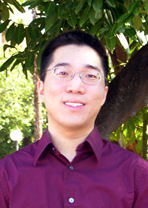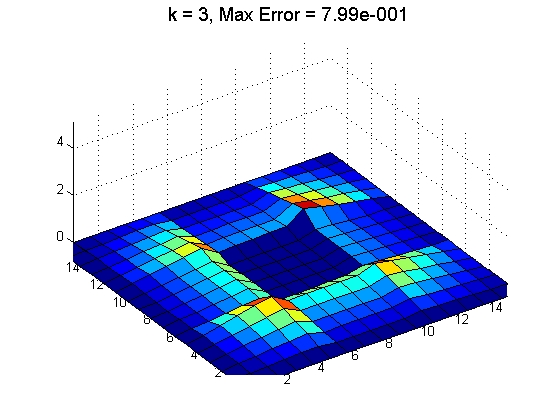
|
Felix Kwok Département de mathématiques et de statistique Université Laval |

|

|
Felix Kwok Département de mathématiques et de statistique Université Laval |

|
My general research interests revolve around algorithms and techniques for efficient large-scale simulations in physics and engineering, particularly when the models are described by PDEs or systems of PDEs. Typically, such simulations must repeatedly solve large, sparse linear and nonlinear systems of equations that result from discretizing the PDEs. To extract maximum efficiency, it is crucial to employ fast, robust and mathematically sound linear and nonlinear solvers, specialized to exploit both the underlying physics of the problem and well-known numerical techniques. Solver design is thus a fascinating topic that lies at the crossroads of mathematical analysis, scientific computing and engineering. It is this fundamentally interdisciplinary nature that I find particularly stimulating and rewarding.
| In domain decomposition methods, the computational domain is divided into several subdomains, and the subdomain equations are solved in parallel. An iteration is then performed to ensure the solutions are consistent across subdomain boundaries. The convergence rate of this iteration is highly dependent on the nature of the PDE and on the precise boundary conditions used along subdomain boundaries. Several problems I have been working on include: | |
|

|
|

|
|

|
The reservoir equations, though highly nonlinear, are directional in nature
because it models fluid flow in a porous medium. Linear and nonlinear solvers
can exploit this directionality to obtain a partial decoupling of the unknowns
and solve them sequentially. The resulting Newton-based nonlinear solver
becomes more robust
with respect to time-step sizes. Meanwhile, the linear solver also converges
more quickly and becomes less sensitive to flow configurations. Ongoing
research seeks to quantify these benefits and to extend the methodology to
other problems that are directional in nature, such as Navier-Stokes.
|
Fully-Implicit Method
 Implicit Pressure/Explicit Saturation  |